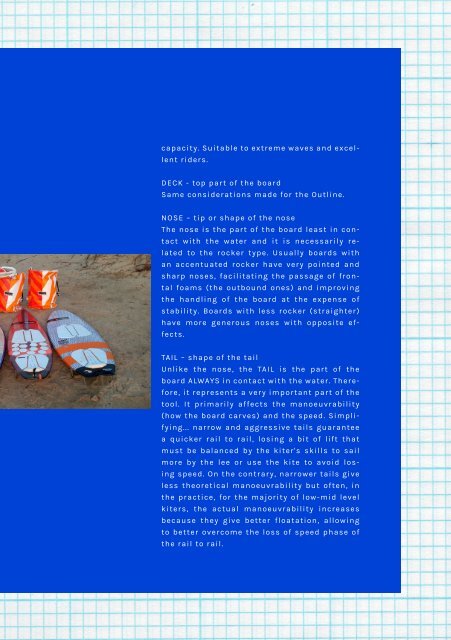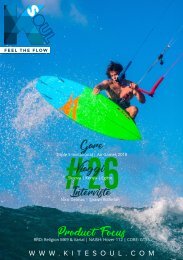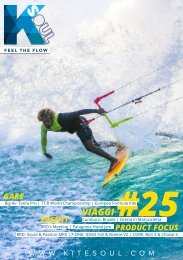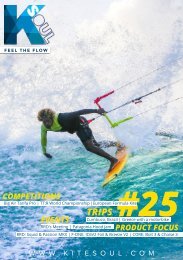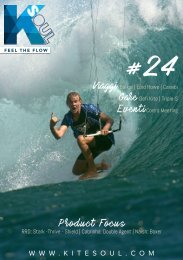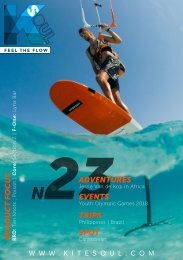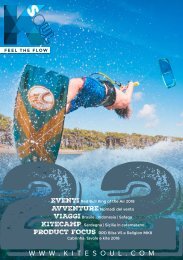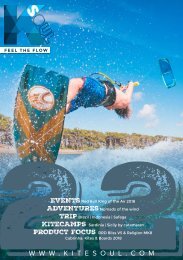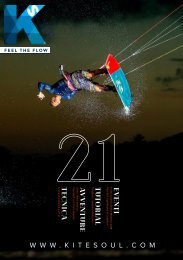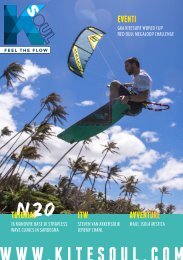Kitesoul Magazine #21 International Edition
In this issue: Sardinia Grand Slam, Lighthouse to Leighton, Endurance Cape Verde Islands, F-one Dealer Meeting in Dakhla, Oahu strike mission, Cyprus, Eleveight Kites, Jeremy Burlando, Joshua Emanuel, Emanuele Martinez, Kite and the City, How to Jibe in 4 ways, 7 steps on how to starts freestyle, Surfboard essential guide and much more.
In this issue: Sardinia Grand Slam, Lighthouse to Leighton, Endurance Cape Verde Islands, F-one Dealer Meeting in Dakhla, Oahu strike mission, Cyprus, Eleveight Kites, Jeremy Burlando, Joshua Emanuel, Emanuele Martinez, Kite and the City, How to Jibe in 4 ways, 7 steps on how to starts freestyle, Surfboard essential guide and much more.
You also want an ePaper? Increase the reach of your titles
YUMPU automatically turns print PDFs into web optimized ePapers that Google loves.
capacity. Suitable to extreme waves and excellent<br />
riders.<br />
DECK - top part of the board<br />
Same considerations made for the Outline.<br />
NOSE – tip or shape of the nose<br />
The nose is the part of the board least in contact<br />
with the water and it is necessarily related<br />
to the rocker type. Usually boards with<br />
an accentuated rocker have very pointed and<br />
sharp noses, facilitating the passage of frontal<br />
foams (the outbound ones) and improving<br />
the handling of the board at the expense of<br />
stability. Boards with less rocker (straighter)<br />
have more generous noses with opposite effects.<br />
TAIL – shape of the tail<br />
Unlike the nose, the TAIL is the part of the<br />
board ALWAYS in contact with the water. Therefore,<br />
it represents a very important part of the<br />
tool. It primarily affects the manoeuvrability<br />
(how the board carves) and the speed. Simplifying...<br />
narrow and aggressive tails guarantee<br />
a quicker rail to rail, losing a bit of lift that<br />
must be balanced by the kiter's skills to sail<br />
more by the lee or use the kite to avoid losing<br />
speed. On the contrary, narrower tails give<br />
less theoretical manoeuvrability but often, in<br />
the practice, for the majority of low-mid level<br />
kiters, the actual manoeuvrability increases<br />
because they give better floatation, allowing<br />
to better overcome the loss of speed phase of<br />
the rail to rail.


